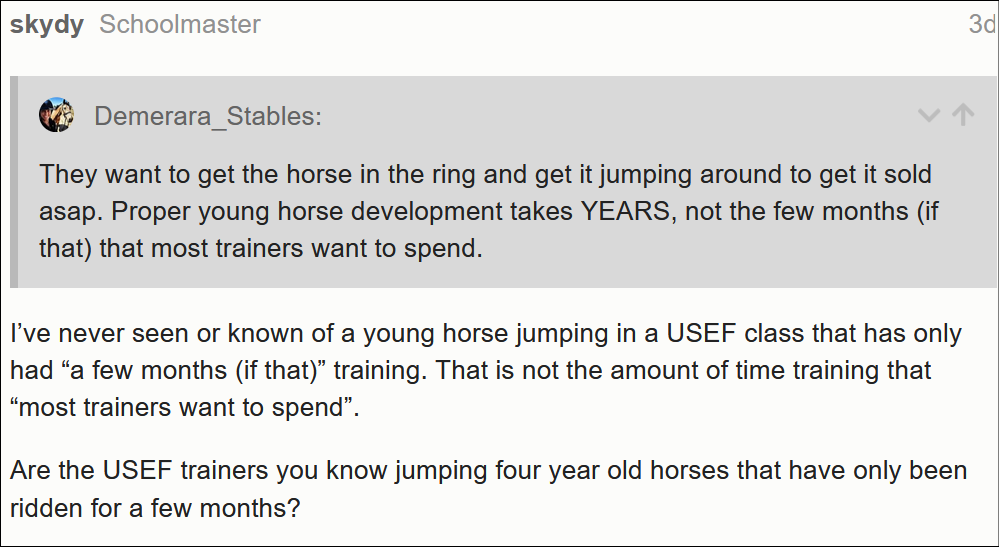I follow a few EU breeders/young horse producers on Instagram. They’ve been really interesting to watch how they take youngsters to their first shows - usually they haul in for a day with a friend and just hang out. Then haul in and canter around the warmup. Then haul in and do a few jumper classes where the focus is entirely on giving the horse a good experience, NOT ribbons or anything competitive. All for just a day.
The advantage of this model is a young horse going to his first show isn’t expected to live on the busy show grounds for a week or more and lope perfectly around multiple hunter divisions. They go for a DAY, and pop around jumps they’ve probably seen before (arena hires are more common), and are expected to be a bit squirrelly. Then they go home to their pasture and friends and think about their experience.
A good US hunter trainer (or trainer in general) will give similar experiences to their youngsters - it’s just harder here. Bringing up a baby from scratch is tough if you’re living on the circuit and/or staying at shows T-S. (That’s part of the draw of imports I think - the well produced ones have had that homework done already). Clients are expecting RESULTS - after all, they’ve been waiting for ages and the show is costing them $5K or more… unless the trainer has installed concrete expectations, it can be tempting to reach for a non-testing chemical might-help solution (or lunge for hours, or tell the client to sell and buy something made) instead of doing the homework.
This got away from me a bit. But I think, as always, there’s “exposure to shows in a way that benefits the horse” and there’s “exposure to shows but done unfairly”. Good trainers do the former, poor and/or uneducated trainers do the latter. You’ll see the range at any given show - but I have to say I’ve seen the worst at unrated competitions. The unscrupulous people at USEF shows tend to hide it better, I guess. Or get booted 

 . The costs of producing a show horse include teaching them how to be comfortable at shows. While following the letter and the spirit of the rules. If you cannot show without the horse getting their “calming supplements”, you don’t belong in the show ring. End of story.
. The costs of producing a show horse include teaching them how to be comfortable at shows. While following the letter and the spirit of the rules. If you cannot show without the horse getting their “calming supplements”, you don’t belong in the show ring. End of story. (Love the white spots!
(Love the white spots!  )
)
